wikiHow is a “wiki,” similar to Wikipedia, which means that many of our articles are co-written by multiple authors. To create this article, 16 people, some anonymous, worked to edit and improve it over time.
There are 17 references cited in this article, which can be found at the bottom of the page.
This article has been viewed 23,889 times.
Learn more...
Driving can be especially challenging for autistic people. While some people on the spectrum are unable to drive safely, others learn how to do so, even if it takes longer. Many autistics are competent drivers and some even make a living as driving instructors.[1] If you think you are confident enough to drive a vehicle of your own, it'll make your life a lot easier and you'll be more independent.
Steps
Learning the Rules of the Road
-
1Consult an occupational therapist or your doctor first before you attempt driving. Driving may not be for everyone. Check up with a therapist first to see if you are attentive enough to drive on the roads. It's very important that you are able to pay attention to everything to what's going on, and react quickly in emergencies, for safety's sake.[2]
- If driving stresses you out, it may be a sign of anxiety issues, or a sign that you are overwhelmed. If you struggle to handle the multi-tasking required for driving, then it may not be safe for you to drive.
- Keep in mind that driving can be tiring to a lot of autistic people, especially when you're still new to it. It's okay if you aren't ready or don't feel like it's a good idea for you to drive.
-
2Get a driver's manual at your nearest Department of Motor Vehicles (DMV) office. In most areas, you can pick one of these booklets up at a DMV office, free-of-charge. Driver's ed courses may also provide driver's manuals for students. Outside of the USA, the document you need might have a different title; for example, in the UK, you'll need to study the Highway Code.Advertisement
-
3Read the manual. This is your go-to guide for learning the rules of the road, how to take control, the do's and don’ts, and on laws in your state or province or location (if you're living in the U.S., its territories, or Canada; other countries may have different laws). Treat this like your bible on everything about driving.
- Start observing the road and other cars when you're a passenger, and watch videos on driving online. This will help you learn what the rules look like in action.[3]
-
4Enroll in a driver's ed course, if available. Although these are usually expensive, they will give a more applied approach to driving a car. They offer classes relating to the manual and, once you have an instructor's permit, they'll give you individualized lessons on driving a car. They will help you out enormously, hopefully giving you an inch of confidence in driving on your own.
- Consider a special driver's ed class for people with disabilities.
- Many driver's ed services even allow you to take the writing test or skills test with them a certain number of times.
- Make sure your instructor knows how best to help and teach you. You may benefit if they offer you more breaks, write instructions down while teaching you, and break information into smaller chunks for you.[4]
-
5Take any required written exam. These generally consist of 10 to 25 questions concerning the rules of the road and response time. Just relax and think when answering them. Complete any other tests required, such as a Hazard Awareness Test which you may need to do.
- You may need to schedule an appointment for this exam; check with your local DMV or other appropriate office.
- If you pass, you will be given an learner's permit. You will then take a vision test and be asked you a set of questions about your health. It may be best to tell them during that time that you are autistic. They will understand and may give you certain accommodations, like extra time on the test or the ability to take the test verbally.[5] [6]
Preparing for the Skills Exam
-
1Start slowly. Even nondisabled drivers don't start off by driving on the highway (or even on busy streets). Many drivers will begin in wide spaces such as empty parking lots, then gradually work their way up to smaller streets, busier streets, and the highway. Starting slowly allows you to adjust to how the car sounds and feels, and allows you to learn where certain controls in the car are located. (You'll be tested on where the controls are for your blinkers, headlights, and windshield wipers, as well as things like the windshield defroster.)
-
2Practice driving often. Ask a family member or friend to accompany you when you're out practicing to be a guide. You may need extra practice before you feel ready, and this is okay.[7]
- Start off on easier streets, such as your neighborhood, nearby parks, and school zones. This will be a good way for you to practice steering and signaling turns. Remember to stick to speed limits, and always yield to pedestrians or bikers.
- Practice on busier streets next. You don't need to go to chaotic areas straight away - and in fact, you shouldn't - but busier streets often have slightly higher speed limits, and allow you to get familiar with sharing the road, turning, stoplights and crosswalks, checking bike lanes, yielding to pedestrians, right-of-way, and changing lanes.
- Transition to practicing on highways, especially quieter ones. Familiarize yourself with how driving on the highway works, since it is a lot different than driving in a city. Highways can be very intimidating at first, especially for autistics, since it requires extra attentiveness and faster driving (many highways range from 65 to 75 mph, and that can seem a little distressing at first). Be aware of faster lanes to pass cars (almost always the lanes to the left of the right lane, or the far-left lane on a multi-lane highway), and the slower lane (almost always the right lane). Always check your mirrors and blind spot before you change lanes. Also be sure there's a wide enough gap in front and in back of you. You need to allow enough space just in case you have to stop or slow down. Later on, you may want to practice going on interstate highways, which are generally busier than regular ones, and learn how to go on entrance and exit ramps. These will help you get into the downtown portion of a city.
- Practice going downtown. Driving downtown will be far more challenging, as traffic is typically more frequent. Use this time to practice more on changing lanes, turning, yielding to pedestrians, bikers, and oncoming traffic, the right-of-way, and parking.
- Ask your therapist, driver's ed instructor, or a DMV worker before the test if you're required to parallel-park for the test.
-
3Take behind-the-wheel lessons. Some states require a certain number of behind-the-wheel lesson hours, depending on your age. Consider doing more lessons than the required minimum. If you can afford it, doing more can be really helpful in building your comfort and skills on the road.
- A good driving instructor will be able to tell you exactly what's on the test in your area, and practice those skills with you. Ask them to do a mock test with you, and give you feedback just as an actual tester would.
-
4Learn some skills that may not be on the test. There are some driving skills that may not be on your driver's test, but that are good to know in case you need to maneuver out of a tight situation or just come across something you don't see as often. Some skills may also turn out to be on your test, depending on where you live (for example, in California, the examiner may ask you to back up for a certain distance). Some skills to learn are:
- Turning at unprotected lights (i.e., the light is just a normal light and not an arrow)
- Making sharp turns, yielding at roundabouts, and U-turns
- Getting out of tight spaces and dead-ends
- Backing up
- Driving with reduced visibility (like at night or in the rain)
- Parallel parking
-
5Take constructive criticism from your peers. It may not be easy being judged on your driving. Just stay calm and accept it. Remember that driving is not easy, even for many neurotypicals. And when you're starting out, you're more likely to make mistakes. Take the positive and negative feedback so it will help you improve next time you practice. Your family wants you to pass the test like everyone else.
-
6Take the skills test. When you're ready, make an appointment to take the skills test at the DMV office or your driver's ed school (if allowed in your area). If you pass, you will get your driver's license.
- If you're going to the DMV, bring a car with you. Make sure it's in good working condition and insured properly. Make sure the headlights, signal lights, and tail lights work so that it's street-safe.
- Bring your permit any any other required documents, like forms and proof of identity.
-
7Remember to stay relaxed and focus on what you practiced. Use common sense and apply your driving skills. It may be prudent to ask your driver's ed instructor prior to the test what constitutes as an automatic fail so that you know what to expect. Always remember to yield to traffic and pedestrians who have the right-of-way, stop at the red light and yellow light (if you can), and stop at stop signs.
- Be aware that you will be tested the same way as everyone! Disability or not, you will need to drive methodically like a safe driver on the road.
- Don't get distracted by the examiner. They will only give you directions and times to change lanes. But if it's giving you anxiety, just pretend that you're the only one there, like you're driving on your own for the first time. Looking at the examiner taking notes may make it more difficult for you to focus on the road and possibly fail your exam. Stay relaxed; you'll do fine.
-
8Don't lose hope if you fail. Many people fail the first time, so don't treat it like it's the end of the world. Just get back to driving and practice on what you needed work the most.[8] Remember that it's far better not to have a license than to drive unsafely and put yourself or others at risk. If it takes a little extra time to perfect your driving skills, hang in there and stay positive and kind to yourself.
- If you're feeling very upset about it, just take a breather from driving. Watch a movie or listen to music to take a break from focusing on driving.
-
9Get your license once you've passed. You may have to take the vision test again, as well as answer specific questions regarding your health. Again, you should mention that you are autistic so that they will understand and make some possible adjustments.
- In some states, like Texas, you may opt in to have a sticker on your license to let officers know that you're autistic, in case you get pulled over.[9]
Driving on Your Own
-
1Familiarize yourself with the car. This is particularly important for autistic people, because you will have to multitask while you're on the road, and that can be challenging. Be acquainted with many of the car's features, including the windshield wipers, the dashboard, the AC and heater, and the low and high beams if you're driving at night.[10]
-
2Familiarize yourself with the engine. If you are going to drive on your own, you should also open the hood and study the engine, like identifying some of the key components such as the battery, and for older cars: the carburetor and the radiator. If you're going to do a manual oil change, put in antifreeze, attach jumper cables, or even check the status of your battery, you will need to be familiar with the engine.
- Ask a family member, friend, or consult wikiHow on how to put in antifreeze for the winter months and windshield fluid for cleaning.
-
3Make sure you're comfortable in your car. It's difficult to focus on driving if you're uncomfortable or struggling to reach the pedals. Before you go driving, you'll want to prepare your car so that you're comfortable in it, and not distracted by other stimuli or difficulties.
- Adjust the rear-view mirror and the side mirrors so you are able to see what's to the side and behind your car. You will be looking at these often, especially when you're changing lanes.
- Adjust your car seat so it's a lot more comfortable to you when you're driving. If you feel the seat is too far back from the accelerator, brake, and clutch (if you're driving a car with manual transmission), you want to get it as close to the pedals as you can.
- If certain parts of the car feel uncomfortable to you (for example, if the steering wheel feels uncomfortable on your hands), see what you can do to make the car more comfortable. You might be able to do something like buy a steering wheel cover or put a cover on your seat.
-
4Develop some safe stims to use while driving. While driving can be tiring to some autistic people, others may need some stimulation after sitting in the car for awhile. However, certain stims, like head-shaking or hand-flapping, can be dangerous when you're driving. Find some stims that don't require you to take your eyes off the road or your hands off the wheel. Some things you might do include:[11]
- Humming or singing to music
- Tracing or tapping your fingers on the steering wheel or the steering wheel cover
- Chewing gum or a chewy stim toy
- Tapping or gently shaking the foot you're not using for the pedals (if you're driving an automatic vehicle)
-
5Take driving slowly. Although you should obey the speed limits as much as you can, there's relatively no rush.[12] Drive defensively. Always pay attention to your surroundings. If you have a doctor's appointment or work, leave with lots of extra time to spare so you don't feel rushed.
-
6Buy a GPS for your car. A Global Positioning System (GPS) will help guide you with directions and tips on getting to your destination safely. They're especially helpful in less-familiar environments and on road trips; many can even tell you of any hotels, restaurants, or gas stations nearby in case you may be low on gas or need to take a break. These are generally expensive, but the price is worth it.
- You can also use a map or GPS app on your phone.
- Make sure you have a safe holder or dock for your device. Don't be tempted to pick up or hold your phone or GPS; you don't want to be distracted from driving, and interacting with your device while you're driving is illegal in many areas.
-
7Give yourself as enough practice as you need driving on your own before venturing out of your comfort zone. Adventure is a wonderful thing. But starting out you may want limit your driving area, time, and passengers first. You want to be sure that you are more experienced with driving your car before you take a chance on moving to a different town or simply traveling on the interstate.[13]
- If possible, ask a family member or friend to ride with you so they can evaluate how far your driving is coming along.
-
8Turn the radio off or start with more relaxing music first. The radio can be very distracting if you've just started driving. In some cases, it may be better to turn it off so you don't lose focus. But if the noise doesn't bother you, stick with classical, jazz, adult contemporary, or public radio stations first.
- In some cases, if you have sensory issues, having music on may be a good idea since it can drown out any disturbing background noise on the road.[14] If need be, consult your therapist or family member first before driving with the radio on.
Driving Under Certain Conditions
-
1Try to avoid rush hour as much as you can. Unless if you have to, try to avoid the rush hour parts of the day. In the United States, that's typically from 7 a.m to around 10 a.m and around 4 p.m to 7 p.m. This is where the roads are busiest the most, especially on the highway and downtown. Driving in it can make you feel more stressed and even impatient. Again, if you need to go to work, see a movie, or go on a date, be sure to leave earlier so you don't feel rushed.[15]
- In some cases, if you're unable to change lanes, you might have to deviate your route so you can find another way to get to your destination.
- If you're going to the movies, it may be best to go sometime late in the morning or around noon or maybe late in the evening when there's less traffic.
-
2Drive slower under inclement weather conditions. Heavy rain and snow can make the tires on your car lose traction and skid when the roads are wet. In rain, this is called hydroplaning, [16] and it is best to try avoiding skidding as much as you can. Moreover, snow can make your trip even slower because you will be driving on more slippery and slushy concrete, not allowing you much response time to brake safely. In conditions like these, you should slow down at least 10 m.p.h. below the recommended speed limit. Turn your headlights and/or fog lights on if you need to.
- Be sure to shovel any snow in your driveway if you're completely blocked.
- Use a scraper to brush off any snow that is on the windshield and back window.
- Warm up the car for at least 5 minutes before driving off so the heater can keep you warm inside. Also put your car in defrost so it makes it easier and drier to see through your windshield and windows.
-
3Drive slowly and carefully in construction zones. Be aware of any construction going on downtown or on the highway. They may close up certain parts due to an event going on, repaving the road, or expansion.
- Scan the road ahead of time. If there are a bunch of traffic cones on the road, go in the path of the cones.
- There will be a construction worker directing the traffic flow in a construction zone. Obey them if they tell you to slow down; they will gesture and/or wave a "Slow" sign. It's important to slow down so you get around the area safely without hitting anyone. Failure to comply can result in doubled fines among others.[17]
- If a street is completely blocked off, you may have to use a directed detour.
-
4Be extra careful when driving at night. While night driving generally involves less traffic, that does not mean it's safer. There are still bikers and pedestrians out at night. Some vehicles may also have broken headlights so it may make them harder to see. Take extra precaution to check your surroundings to make sure the road is perfectly clear before turning or moving on.
- You will also want to turn on your high beams to read any road signs or to scan any obstructions on the road.
Handling Emergencies
-
1Keep emergency supplies in your car. If you have supplies in your car, you'll be prepared for potential adverse circumstances, whether it's a crash, getting stuck somewhere, or an injury. While you should tailor what you have based on where you live and who's usually in the car with you, the things you should always have include:
- A copy of your car insurance policy (you'll need this if you get into an accident)
- A first-aid kit
- Water and food that won't go bad (e.g. granola bars)
- A spare tire and a jack (you can keep these in your trunk; even if you can't replace the tire yourself, someone else can)
- A portable cell phone charger
-
2Know what to do if you get in an accident. This will happen to everyone. It can be especially confusing or frightening if you're autistic. Knowing what to do can help you calm yourself and know what steps to take. But in case you accidentally wreck someone else's car or vice versa, here's what you should do:
- Take a few deep breaths to calm yourself. (If you need to stim to calm yourself, use a stim that doesn't interfere with your ability to drive safely or focus on the road. Don't move around too much if you think you've been injured.)
- Pull over and turn on your emergency lights.
- If safe to do so, make sure the people in the other car aren't injured.
- Exchange your name and insurance information with them, and if you're comfortable with it, your cell phone number. (Do not give them information like your address or social security number, for safety reasons.)
- Call emergency services and your insurance provider. The police will need to investigate the damage. The paramedics may also need to show up in case of any injuries involved. Also call your insurance provider to see how much liability expenses will be added to the cost of the victim's car, or if vice versa.
-
3Be prepared for a flat tire. Check your tires often and regularly schedule an upgrade on new ones every year. Sometimes your tires may gradually deflate without even knowing it. This can be caused by a variety of reasons, including speeding through dips or simply on road bumps.[18] But in case if a flat tire happens, here's what you should do:
- Immediately pull over to the side of the road or curb.[19]
- If you brought a jack and spare tire along, take it out and replace the tires.[20] Always pack a spare tire!
- If you don't know how to change a tire, wait until a more experienced person comes along to help you, or simply call a mechanic. Mechanics will tow the car so they can change a tire for you. You will be charged for it though.
- If you can get by without paying for anything, try calling a family member for assistance. They can also demonstrate how to properly change a tire so you will remember next time it happens.
-
4Call for help if your car breaks down. If your car suddenly dies, it is possible that something is wrong with the engine. In case this happens:
- Call a mechanic, or a friend or family member who has experience in this area. The mechanic will give you a diagnosis on the problem and a quote on how much it will cost with labor.
- If your car is making black smoke, run away from your car and get to a safe distance. It may be on fire.
- If the problem persists, it may be that your car is on its last legs. You might want to consider getting a new car.
Warnings
- Take a break if you're getting overwhelmed, anxious, or tired. Find a safe spot to pull over or park and unwind before going back on the road.⧼thumbs_response⧽
- Not all autistic people are able to handle the challenges of driving. If you're not fit to drive, or if you want to be a lot more ecologically efficient, you may want to consider alternative methods of transportation. Consider biking, if you're able to bike and the weather is okay. Buses, taxis, carpools, and ride sharing programs (like Uber or Lyft) can help you get around. For long distances, try a Greyhound bus or a train.⧼thumbs_response⧽
References
- ↑ https://www.bbc.com/news/uk-england-coventry-warwickshire-17589282
- ↑ https://wexnermedical.osu.edu/blog/how-autism-can-affect-driving
- ↑ https://www.autism.org.uk/advice-and-guidance/topics/transport/driving/england#H2_1
- ↑ https://www.autism.org.uk/advice-and-guidance/topics/transport/driving/england#H2_1
- ↑ https://www.gov.uk/theory-test/reading-difficulty-disability-or-health-condition
- ↑ https://www.dmv.ca.gov/portal/dmv/detail/dl/dl_info#alternative
- ↑ https://ibcces.org/blog/2020/07/02/driving-car-autism-different/
- ↑ https://ibcces.org/blog/2020/07/02/driving-car-autism-different/
- ↑ https://aspergers101.com/texas-dps-autism-training-educationnew-driving-camp-autistic-drivers/
- ↑ https://ibcces.org/blog/2020/07/02/driving-car-autism-different/
- ↑ https://dpdr-stims.tumblr.com/post/168064578577/stimming-and-driving
- ↑ https://www.elemy.com/studio/autism-resources/driving-and-teaching
- ↑ https://www.elemy.com/studio/autism-resources/driving-and-teaching
- ↑ http://www.aspergerfoundation.org.uk/infosheets/sensoryissues.pdf
- ↑ https://www.churchill.com/car-insurance/tips/rush-hour-driving
- ↑ http://www.safemotorist.com/articles/Hydroplaning_Basics.aspx
- ↑ https://www.ghsa.org/state-laws/issues/work%20zones
- ↑ http://evanstire.com/top-10-most-common-causes-of-a-flat-tire/
- ↑ https://www.4wheelparts.com/all-terrain-tires/5-step-flat-repair.aspx
- ↑ https://www.4wheelparts.com/all-terrain-tires/5-step-flat-repair.aspx
- ↑ https://www.youtube.com/watch?v=mUnfbiEJytA
- ↑ https://aspergers101.com/driving-while-autistic/
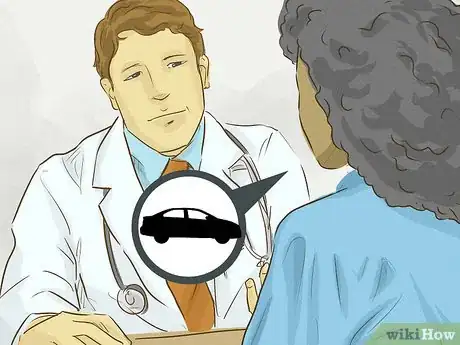




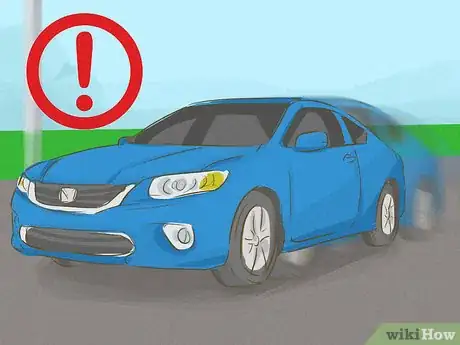

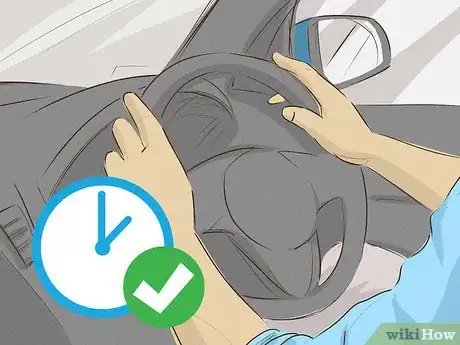
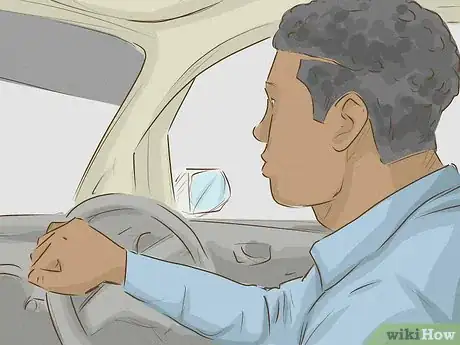









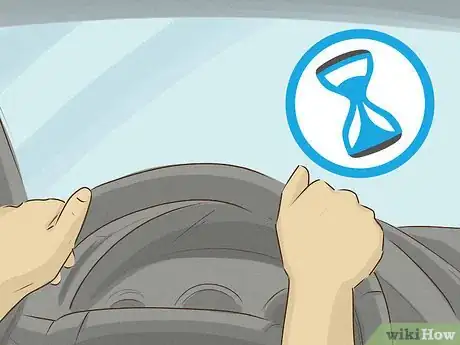
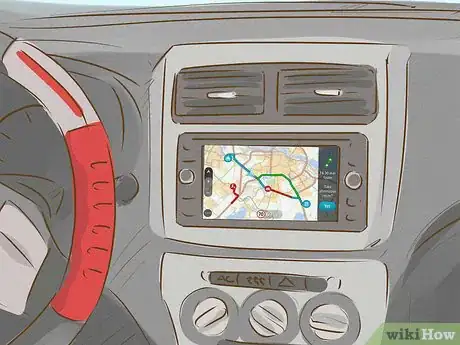


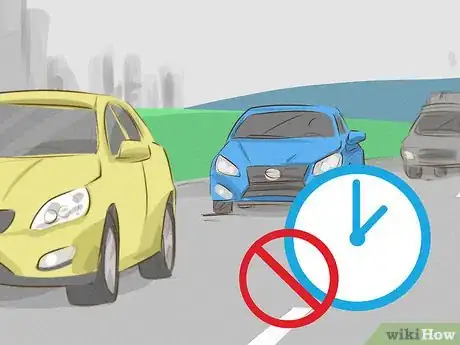


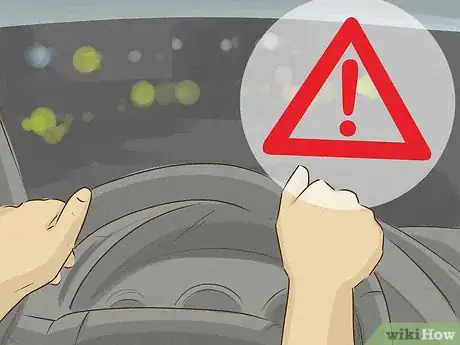



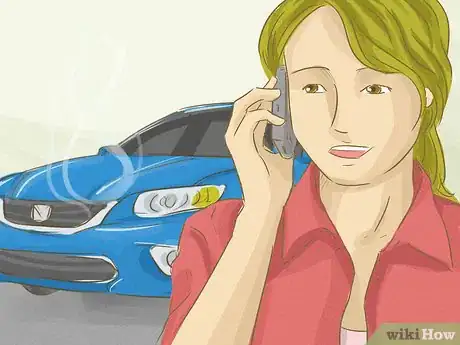



















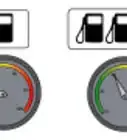






































Medical Disclaimer
The content of this article is not intended to be a substitute for professional medical advice, examination, diagnosis, or treatment. You should always contact your doctor or other qualified healthcare professional before starting, changing, or stopping any kind of health treatment.
Read More...